If you’re planning to drive in Iceland, your best bet is to learn more about the rules of the road before you get behind the wheel. And while you might be more focused on things like which side of the road Icelanders drive on – the right, if you didn’t know – actually, you might be surprised to learn that you should be concerned about something else entirely. In fact, it’s the Iceland roundabout rules that will potentially cause you the most trouble.
Before you arrive for your ultimate Iceland trip, here’s everything you need to know about Iceland roundabouts, especially 2-lane roundabout rules.
Why Roundabouts in Iceland Confuse Foreign Drivers
You’ve done your research on what side of the road to drive on, how fast you are allowed to go, and how to approach single-lane bridges. You know how to watch the road and weather conditions and recognize that conditions can change fast. However, you may think you already know how to deal with roundabouts, especially if you have them in your home country.
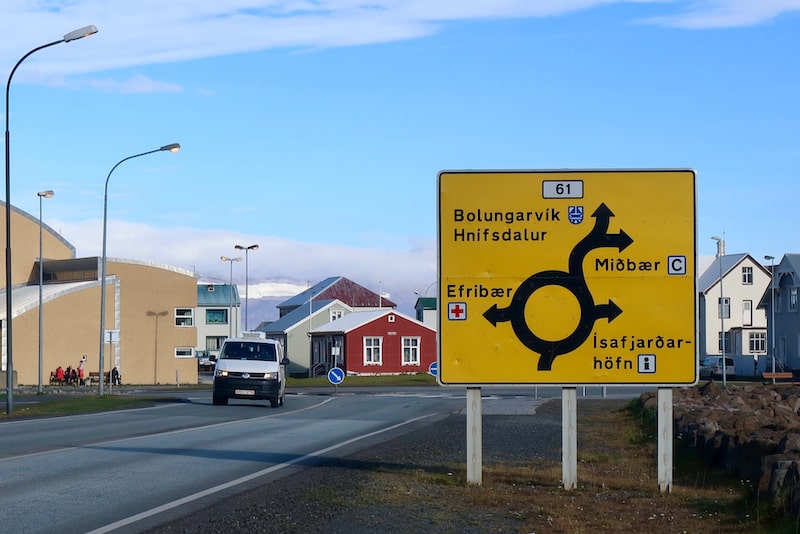
The Key Difference: Right-of-Way in Icelandic Two-Lane Roundabouts
What keeps the traffic moving in places with roundabouts is that drivers all understand who has the right-of-way. If it’s clear who has priority, they filter in and weave out as if in a music-less ballet. In a place where there’s as little traffic as there typically is in Iceland, it should be almost organic, and definitely stress-free. Except that it isn’t, and that’s down to one misunderstood rule of the road.
While the one-lane roundabouts are easy enough to navigate, the 2-lane roundabout rules in Iceland are likely to leave you scratching your head. In short, the driver who has the right-of-way in these roundabouts is different from most places. In short, the inner lane has priority. Let’s take a closer look.
Inner Lane Priority Explained Clearly
So, what does it mean when we say the inner lane has priority? The Iceland roundabout rules dictate that the drivers in the inner lane have the right-of-way to exit the roundabout, cutting across the traffic in the outer lane. This is why it’s important to primarily use the outer lane only when leaving at the first exit. Drivers in the outer lane must pay attention to the other drivers and yield when someone indicates that they are leaving the roundabout.
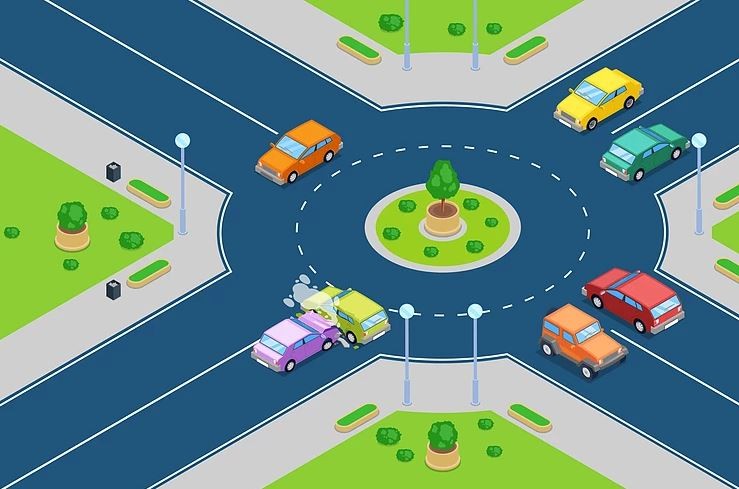
Why This Rule Is Different From Most Countries
Think about how it is in your own country for a minute. We’ll bet you that the opposite is true, or you’re rifling through a copy of your highway code to try to find out. In case you’re thinking of checking the Icelandic version, don’t. There’s nothing about the rules of driving on roundabouts except that you’re not allowed to park on one. The right-of-way thing is more of an accepted method rather than an actual law, which is all well and good so long as everyone knows and respects such conventions.
How to Choose the Correct Lane Before Entering
Because of the unique Iceland roundabout rules, you’ll need to know how to choose the correct lane before you enter the roundabout. Being in the proper lane makes it easier to follow the rules and avoid impeding traffic or worse, causing an accident.
First Exit: What Lane to Use
If you are going to exit on the first exit, as if you are making a right turn at a traditional intersection, you should enter a 2-lane roundabout in the outer lane. This will reduce or eliminate the chances of someone from the inner lane crossing over, especially if the roundabout exits into two lanes as well, as most 2-lane roundabouts do. If you make a mistake and need to continue to the second exit, indicate to the left to let others know your intentions.

Second Exit and Beyond: Correct Positioning
If you’ll be staying in the roundabout until the second exit or beyond, you should enter the inner lane. You will not need to indicate left to continue around the roundabout when you’re in the inner lane, but when you’re ready to exit, you should indicate right to let the drivers in the outer lane know you will be leaving the roundabout.
What You Are Not Allowed to Do Inside the Roundabout
Now that you know what you’re supposed to do in a roundabout, it’s time to explore what you shouldn’t do. Following all the roundabout rules means traffic flows more smoothly and there is a much lower risk of getting into an accident. In fact, one of the biggest causes of traffic accidents in Iceland is tourists who aren’t aware of the roundabout rules.
Lane Changes and Cutting Across
One of the biggest mistakes you can make in a roundabout is changing lanes. You should always enter the lane you intend to use. If you make a mistake and enter the outer lane when you intend to continue, signaling to the left will let others know you are staying in. Only cut across from the inner lane when you are exiting.
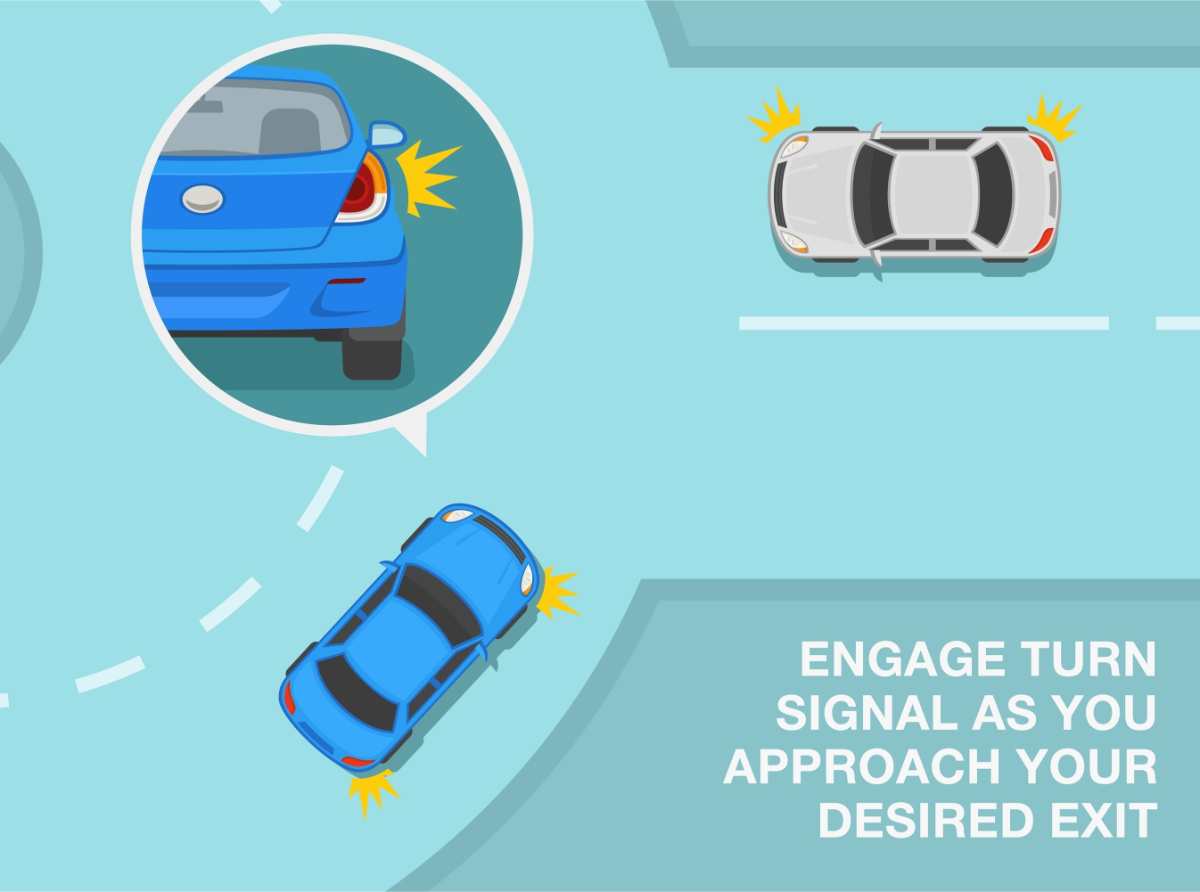
Signaling When Exiting
You’re likely used to signaling every move you make on the road to communicate with other drivers. However, you don’t always need to signal your intentions in Iceland’s roundabouts, as long as you’re following the basic rules. For instance, you don’t need to indicate right when entering a roundabout. It is assumed you will be entering.
You should, on the other hand, indicate to the right when you’re exiting the roundabout, whether you’re in the inner or outer lane. This rule is especially important when exiting from the inner lane. Likewise, if you’re in the outer lane and wish to continue past the first exit in the roundabout, you should indicate to the left to let others know.
Common Mistakes Tourists Make With Rental Cars
Whether it’s failing to understand the Iceland roundabout rules or simply inexperience, here are some of the common mistakes we see tourists make with their rental cars:
- Not understanding or respecting lane priority
- Choosing the incorrect lane on entry
- Changing lanes inside the roundabout
- Failing to signal correctly
- Hesitating to make a decision
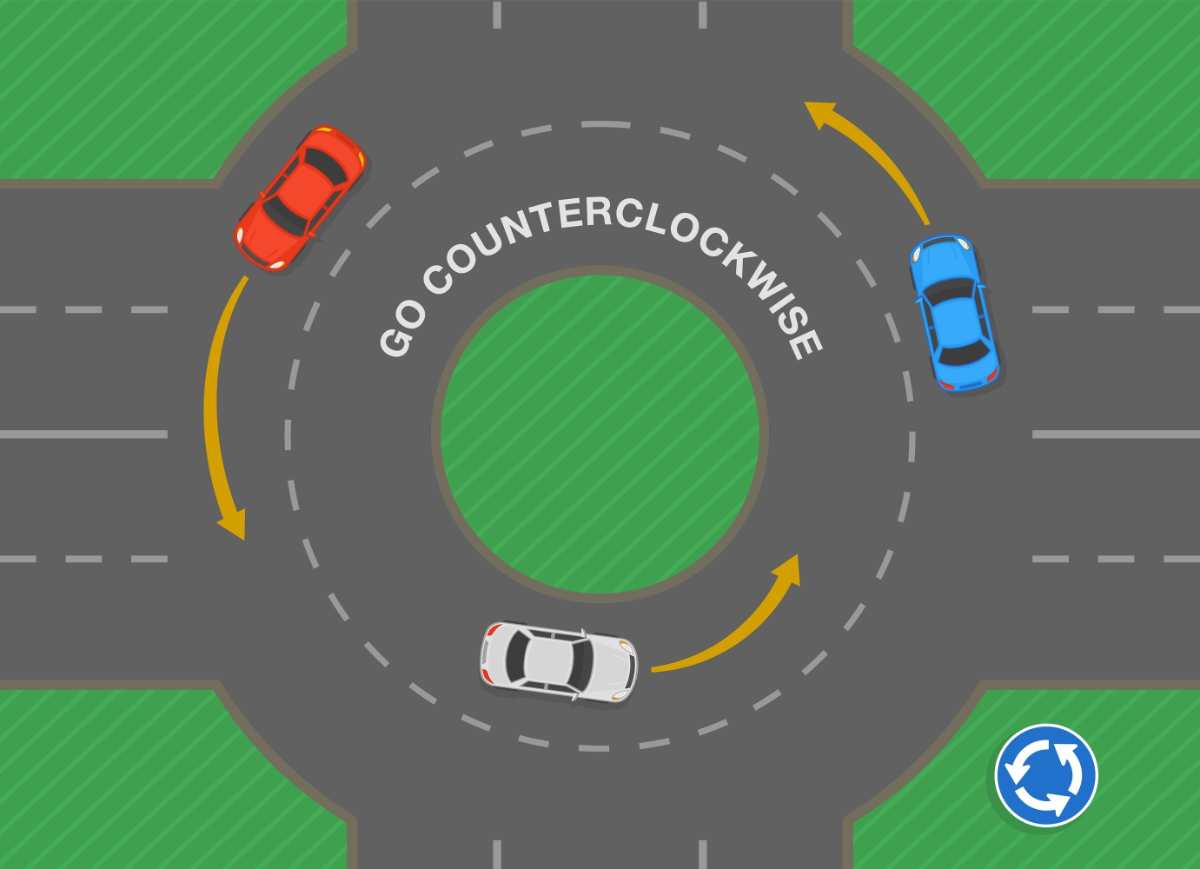
Why Most Roundabout Accidents Involve Rental Vehicles
The noticeable increase in tourism over the last decade has created a few issues, one of which is that Icelandic roundabout rules don’t match those in other parts of the world. Icelandic driving schools teach new drivers that they have priority if they’re using the inner lane, until the driver of the car next to them was taught elsewhere that the exact opposite is true. Before you know it, one driver has cut someone off, causing a damaged car and injured pride.
Such a difference in everyday practice, regardless of whether it’s actually law or not, is giving rise to problems. Though fatal accidents are still incredibly rare in a small country such as Iceland, there has been an increasing number of less serious accidents that can be attributed to such contradictory practice. Of course, it’s easy to say that all drivers must follow the rules and conventions of the country they’re driving in, but they have to know what those are first.
A study by the Icelandic Road and Coastal Administration of accidents that happened on roundabouts from 2011 to 2015 found that almost a quarter of them involved foreign drivers. That’s a disproportionately high figure when compared to the number of renters versus locals. And the figure is even more worrying when you look at junctions frequented by tourists. For instance, at the roundabout where the ring road meets the road to Thingvellir, that figure rises to almost two-thirds.
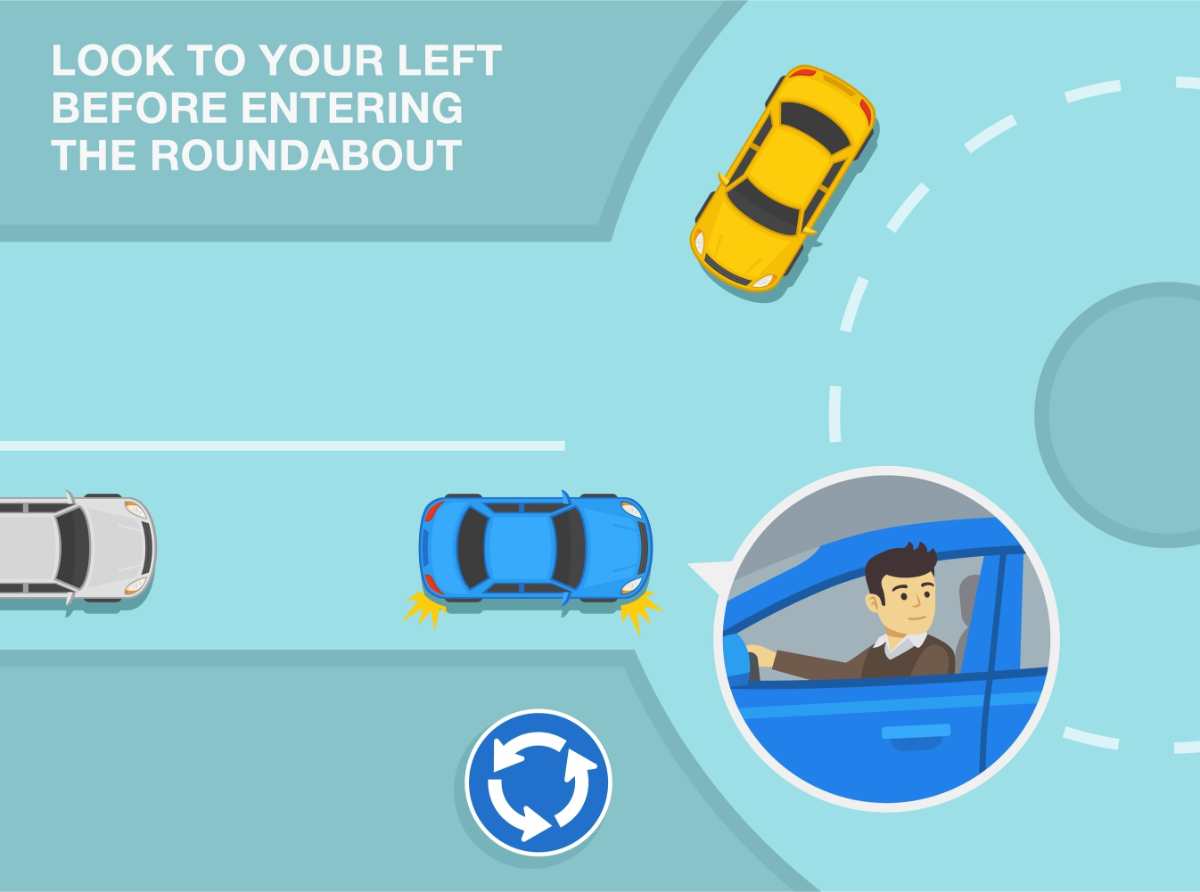
Insurance, Liability, and What Happens After a Roundabout Accident
Having adequate insurance is a vital part of renting a car in Iceland. At Reykjavik Cars, we recommend buying full insurance to give you the most coverage. At a minimum, you will need third-party liability, collision damage waiver, and super collision damage waiver. However, we recommend taking as much as possible because so many things can go wrong in Iceland. It’s worth the peace of mind.
Remember, only drivers listed on the rental agreement will be covered.
If you are involved in an accident in a roundabout, you will take similar steps to any other accident:
- Pull over in a safe place and evaluate any injuries
- Exchange information with the other driver
- Contact the police
- Document the accident by taking pictures and notes
- Contact your rental agency
If you are found at fault, your third-party liability insurance will cover the damages from the accident. Damage to your rental car will be covered by your collision damage waiver or super collision damage waiver. However, if you don’t have insurance, the at-fault party will be solely responsible for paying for repairs. Even if you have insurance from an outside provider, you must pay and file for reimbursement later.
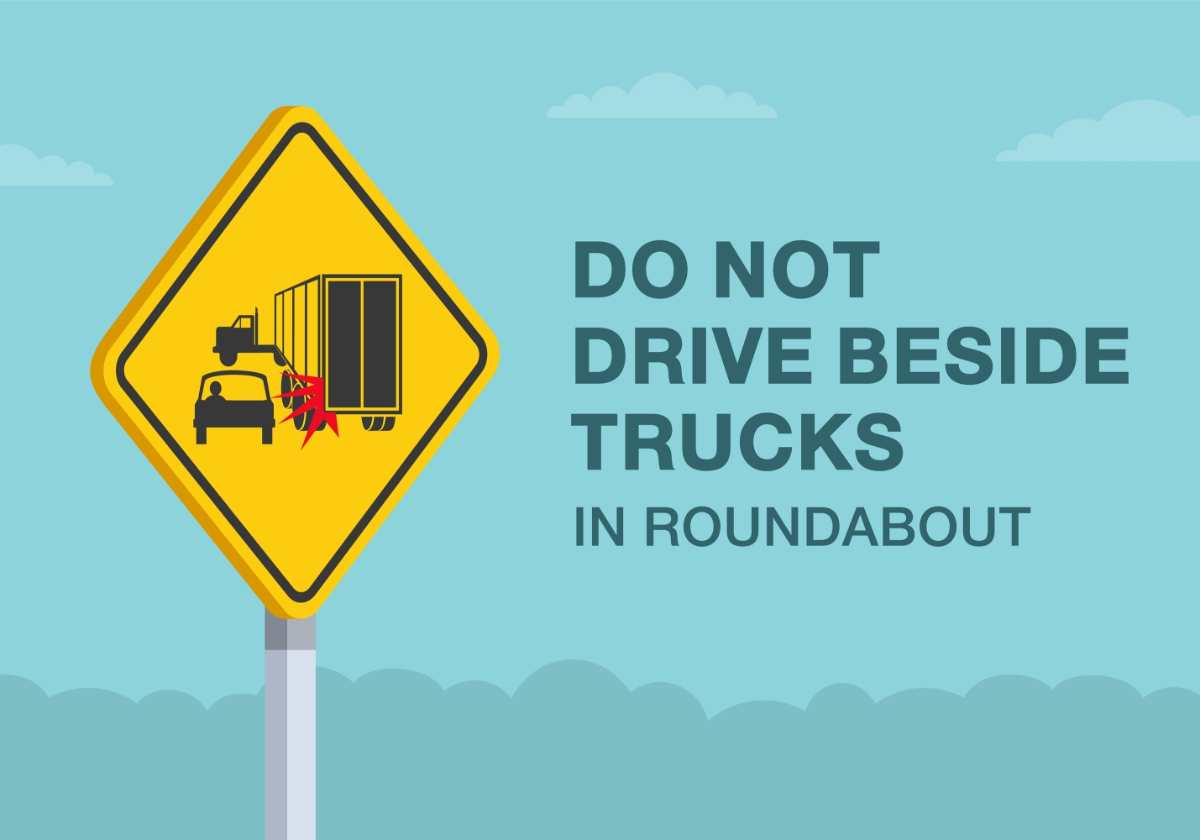
Practical Tips From a Local Car Rental Company in Iceland
Are you feeling overwhelmed by Iceland’s roundabout rules? There’s no need to fret! We’re sharing these tips to help you get more comfortable with driving in Iceland:
- Remember that the inner lane always takes priority, no matter what.
- Choose the proper lane from the beginning: the outer lane for the first exit and the inner lane for the others.
- Signal to the right only when you are going to exit. Only signal left if you are in the outer lane and need to go to the second exit.
- Stay in your lane.
- Approach the roundabout carefully, especially in slippery winter conditions.
- Expect most roundabouts to be single-lane. These roundabouts are easier to navigate.
- Don’t hesitate. Drive confidently.
Final Advice for Driving Roundabouts Safely in Iceland
Iceland’s roundabouts may have different rules from what you’re used to, but once you are aware of the differences, you will find them less stressful and easier to navigate. When you rent a car in Iceland to self-drive, you are responsible for learning the rules of the road and following them to help ensure everyone remains safe.
By following these tips and paying close attention as you drive through the many roundabouts in Iceland, you’ll enjoy a safe, smooth driving experience that will take you to all the places you want to go in Iceland.


 By
By


